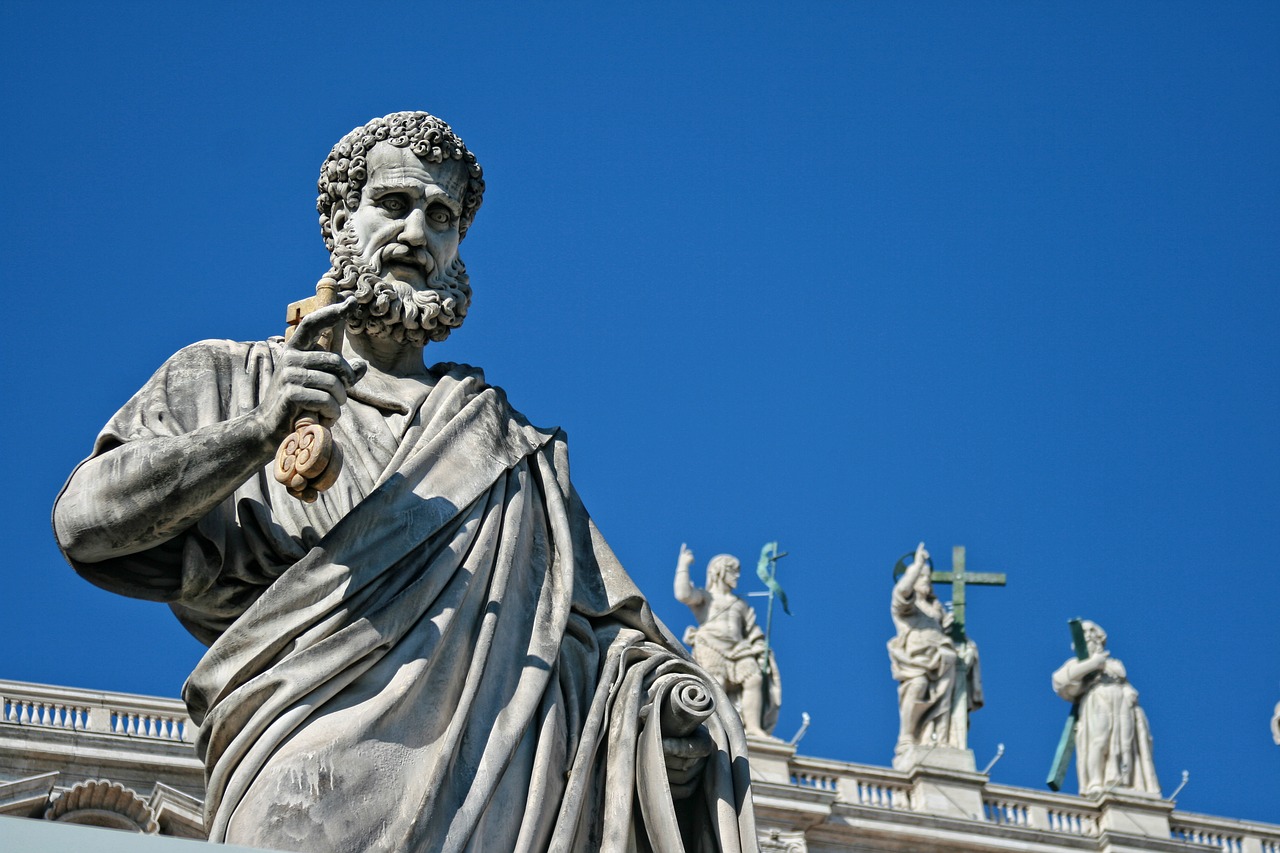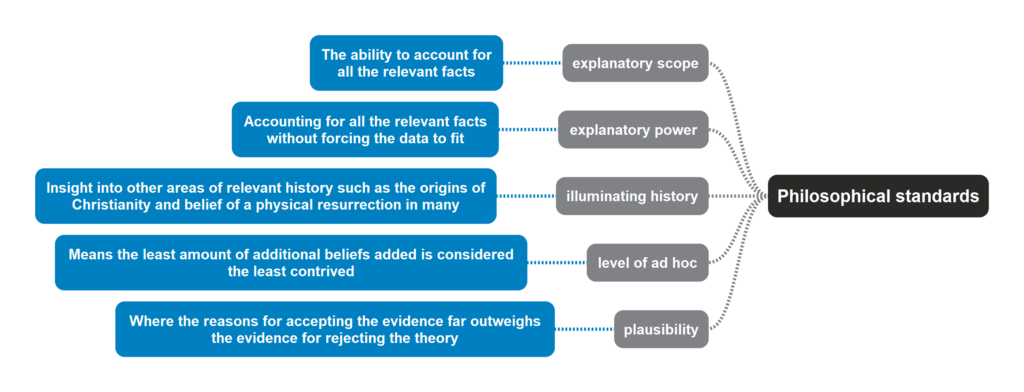2.1 The Historical Method: Philosophical standards

Introduction
Our criteria for the resurrection must be carefully stated and here we have a broad range of standards to verify it. We are doing this so we can present our case (The Resurrection) with the opposing theories and see which one makes the best interpretation of the evidence. A scoring criteria helps us deduce the best explanation for the evidence. Here we will be looking at criteria for what level of historical certainty is reasonable (for example, in court you never know someone is 100% guilty, but the evidence points that way); We will also see if it meets philosophical standards for its case in Explanatory scope and power; illumination of history; which is the least ad hoc; how plausible is the theory. This will be explained in further depth in this section.
We would also then consider historical standards required for a case built around information investigated in antiquity. Standards that apply are multiple independent sources; testimony from enemy sources; embarrassing admissions; eyewitness testimony and early testimony close to the event which we’ll explain in greater depth further in.
We use these methods because such a claim about the resurrection has historical and philosophical implications on our worldview.
Principle of testimony
We need to establish what Richard Swinburne calls the “Principle of Testimony.” He argues that we should believe what others tell us they have done or perceived–in the absence of counter-evidence. Without this principle of testimony we would have very little knowledge about the world. How many of you have looked through a telescope and seen the planet Neptune for yourself? If you have not, then how do you know it exists? If we must go out and personally verify everything we hear, we have very little knowledge about the world. To avoid this we should adopt Swinburne’s very plausible Principle of Testimony. This helps us progress in science, language, and other fields.
Level of historical certainty
When I say proof does not aim at ‘absolute historical certainty’ what do I mean by that? When it comes to history, we can only speak of probability, not 100 percent certainty. However, do not be discouraged because in historical terms, Jesus’ resurrection cannot be established with absolute certainty, atheism and all the world religions share exactly the same challenge.
Can we know really that we were not created 5 Minutes ago, with our memories and food in our stomachs? Of course not. Outside of worldviews, virtually nothing can be established 100%. Can we really know George Washington was the first president of the United States of America rather than a mythical figure? Perhaps documents were forged and it’s a massive cover up. But we can know with a high degree of certainty the plausibility of many cases through historical enquiry.
Professional historians talk in probabilities. With reference to Jesus’ resurrection we are looking at what we can know with reasonable certainty when historical inquiry is applied. Where does reasonable historical certainty lie on this graph? (See above) This is somewhat subjective a question. Gary Habermas, PHD, philosopher and expert in Jesus resurrection studies would place it to the right of ‘somewhat certain’ and continue onto the ‘very certain’ part with very few historians to disagree especially when it comes to antiquity. In Historical enquiry the historian combs through data, considers all the possibilities, and seeks to determine which scenario best explains the data.
Unlike an attorney, the historian often has no living witnesses available to cross-examine. Moreover few historical witnesses leave a record. Looking at the writings available, the historian may be able to examine and compare other writings by the same author and perhaps his or her contemporaries to determine what the author probably meant by a certain statement. Background information and principles have helped historians uncover events with reasonable certainty.
Sources for ‘Level of historical certainty’
- Very Certain: A similar graph with explanations is is presented in Gary R Habermas and J.P. Moreland book Beyond Death
- Background information & Principles (see historical measurements slides)
- Gary Habermas & Mike Licona: The Case for the Resurrection of Jesus




0 Comments